
Posts Tagged: dust
Can't Cut the Mustard? Not Honey Bees!
The phrase "can't cut the mustard" (not able to handle the job) doesn't apply to honey bees. It's...
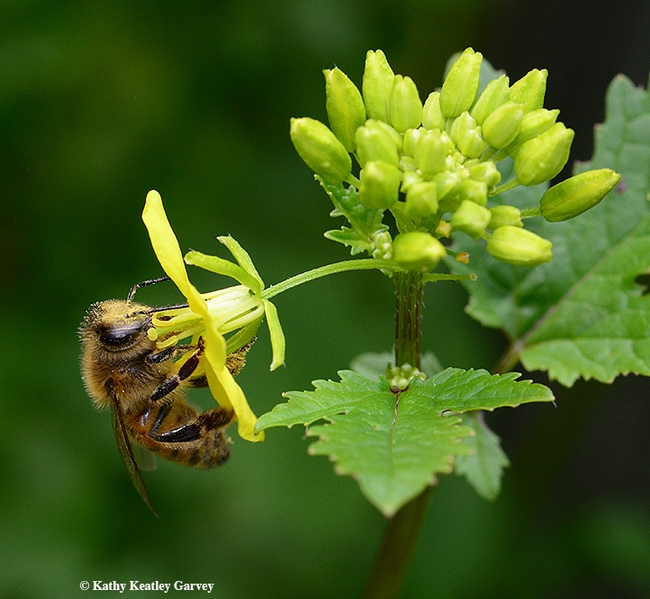
A pollen-laden honey bee nectaring a mustard blossom in Vacaville, Calif. this week: in between the rains! (Photo by Kathy Keatley Garvey)
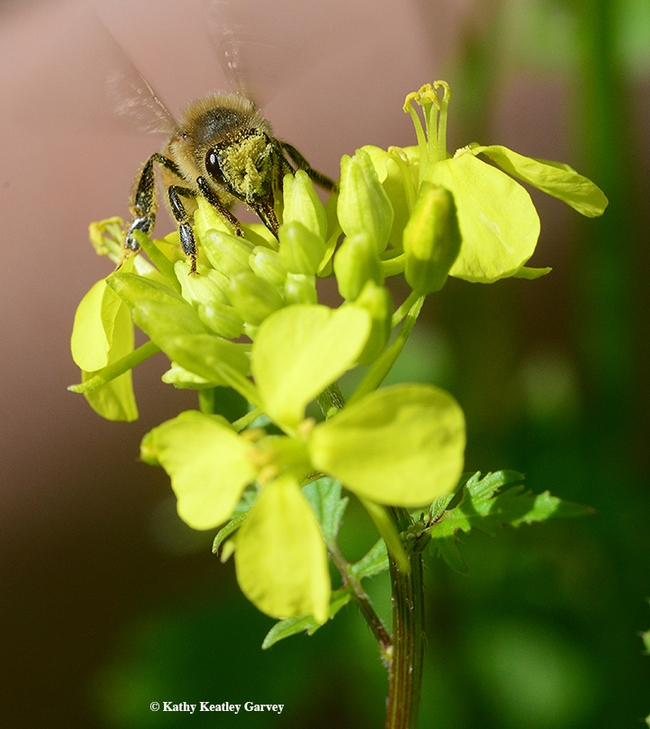
Mustard pollen is to a bee what a milk mustache is to a kid. (Photo by Kathy Keatley Garvey)
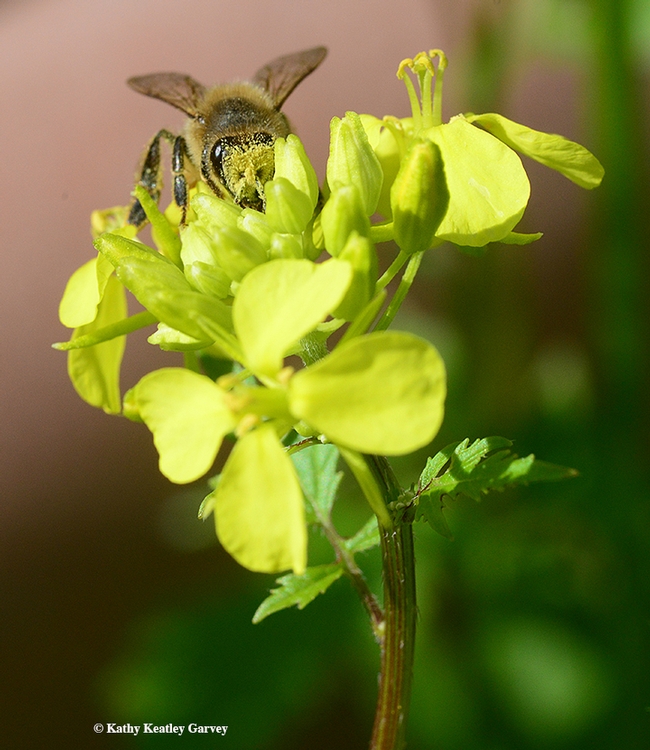
The bee is grabbing both pollen and nectar from a mustard blossom. (Photo by Kathy Keatley Garvey)
Dust and glyphosate performance
It's getting hot and dry in the Central Valley and the movement of equipment in and out of...
Rolling in the Mustard
A sure sign of spring: honey bees foraging on mustard. You'll see mustard growing as cover crops...
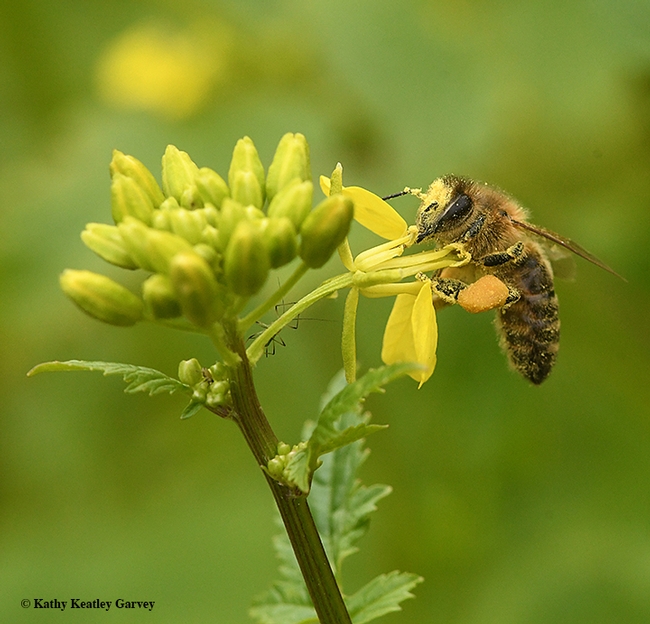
A honey bee foraging on mustard on Sunday, March 18 in Vacaville, Calif. (Photo by Kathy Keatley Garvey)
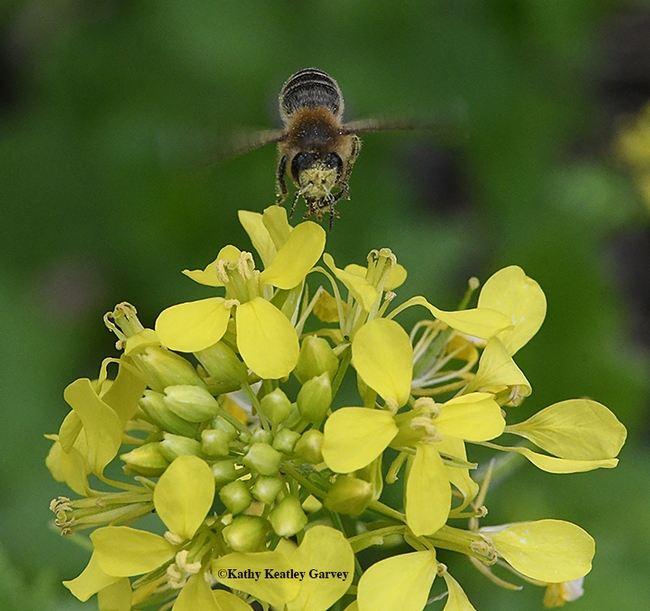
Full speed ahead: "gold dust" or mustard pollen covers the head of this honey bee. (Photo by Kathy Keatley Garvey)
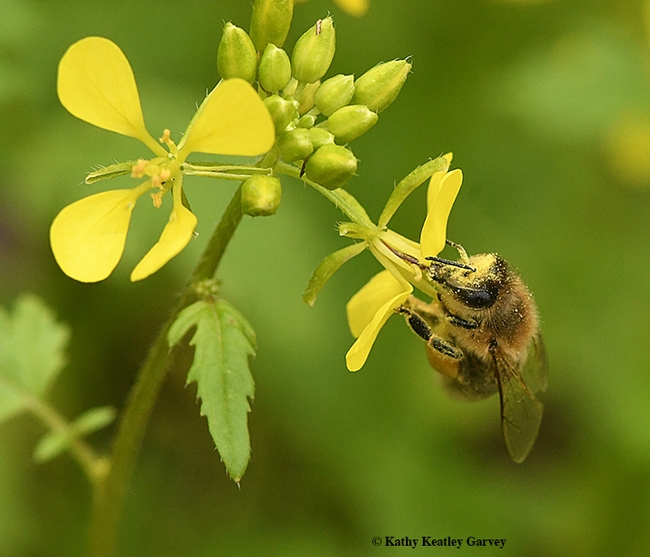
Look closely and you can see the proboscis (tongue) of this honey bee. (Photo by Kathy Keatley Garvey)
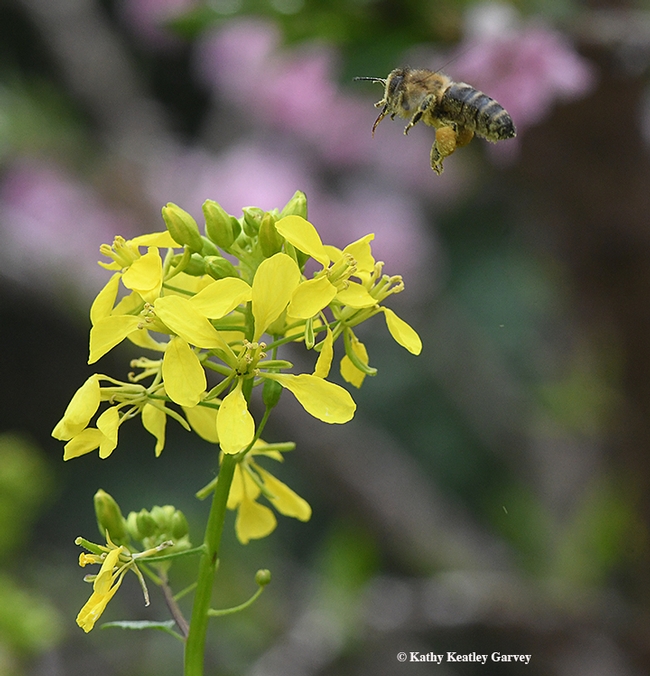
And she's off! A honey bee caught in flight as she leaves a mustard blossom. (Photo by Kathy Keatley Garvey)
Unseen dangers are lurking in your couch
Dan Morain’s opinion piece on California Technical Bulletin 117 in the Sacramento Bee last Sunday has most of the facts we need to learn about our toxic couches. Drafted in the 1970s to mandate the fire protection for household furnishings, the bulletin was intended to save lives. That was in a naïve era, before methods could measure fire retardants in women and children or correlate their accumulation over years in our bodies to lack of attention, poor motor skills and low IQ in our children.

UC Berkeley Professor Brenda Eskenazi and her coauthors measured fire retardants in 300 pregnant women and their children at 7 years of age, and correlated them with low scores for neurological development. At UC San Francisco, Tracey Woodruff measured flame retardants in pregnant women and found levels twice as high in California women than those living elsewhere. These substances accumulate and persist in some body tissues for up to 12 years.
Policymakers and scientists agree that Technical Bulletin 117 needs reform, since it requires the highest levels of flame retardant in the nation and perhaps the world, as high as 5 percent of the weight of the foam. Researchers who tested dust in California homes found that new couches were just as likely to result in dangerous levels of fire retardant dust as old furniture. If I were to look for a retardant-free couch tomorrow, I would have a difficult time finding one. Nor would I be able to determine which furnishings to avoid, since the chemical content of these items is considered a trade secret.
But my precautionary dilemma is not as troubling for me as it is for the UC hospitals that continually expand to serve our communities. They also purchase new furniture with flame retardants, including crib mattresses for their most vulnerable patients. Practice Greenhealth and the Healthy Hospital Initiative promote the greening of hospitals and grapple nationwide with regulations that prevent members from removing toxins with potential harm to patients and staff. The retardant manufacturing companies have pushed back aggressively after four decades of public policy became their principal market strategy.
Governor Brown has asked state agencies to re-examine the benefits of flame retardants against their long-term costs. Until they can agree on a solution that first, does no harm, I will have an uneasy relationship with my couch.
Wireless networks could improve state water forecasting
A new wireless data collection system deployed at Duncan Peak, located near the town of Foresthill on the Middle Fork of the American River basin, is part of a new water information system for California. This extensively distributed sensor network will allow for better characterization on the amount of water stored in the snow and the soil throughout the watershed.
This wireless system is part of the research being conducted by University of California researchers as part of the Sierra Nevada Adaptive Management Project (SNAMP) to investigate the impacts of fuels treatment projects on water quality and quantity and how water is routed through catchments. Information collected from these wireless systems includes measurements of snow depth, temperature, relative humidity, soil moisture, and solar radiation. The data will also be integrated into models which will extend the results to areas where no measurements are being made.
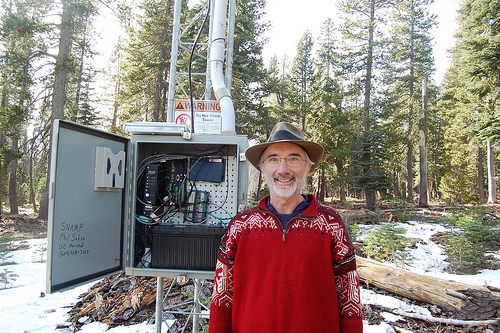
UC Professor Roger Bales and a meteorological station data collector.
Using one base station to log all the measurements and broadcast out over the landscape, it connects wirelessly to sensors up to 350 feet away, a distance that can be extended multiple times by placing “hoppers,” or signal relays, between the sensors and base station. This ‘mesh network’ insures multiple readings so no data is lost during transmission. Twenty more base stations are planned for instillation in the American River Basin.
The wireless system is made possible by the development of ultra-low power radios that can run on two AA batteries for up to two years and which can transmit data over long distances using the same technology as a home internet wireless network. This mesh radio network comes from DUST Networks. Researchers Steve Glaser and Branko Kerkez from UC Berkeley, working with Prof. Roger Bales at UC Merced, have also installed a sensor network at their Critical Zone Observatory research site near Shaver Lake to monitor the same hydrologic variables as in the SNAMP sites. If the wireless system drops out due to extreme conditions, such as a snow storm or other malfunction, no problem! Each sensor also logs to a USB stick, from which the data can also be easily retrieved.
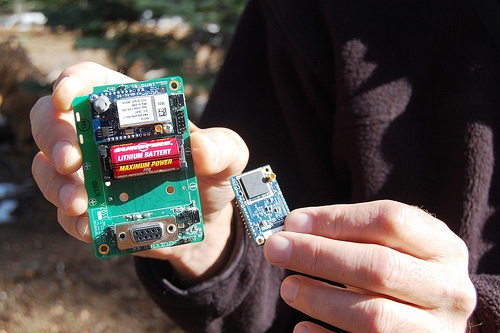
Low power computer components used in the snow depth wireless sensor network.
More precise estimates on water storage within a basin will lead to increasingly accurate predictions of water availability for use in hydropower, irrigation, habitat and household consumption.
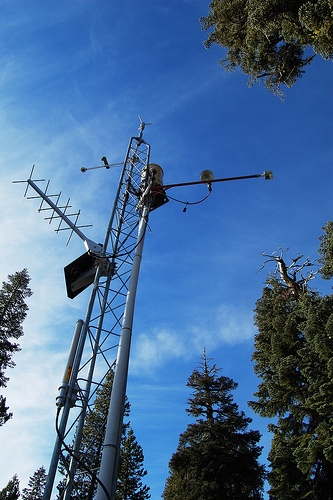
Duncan Peak meteorological station.
